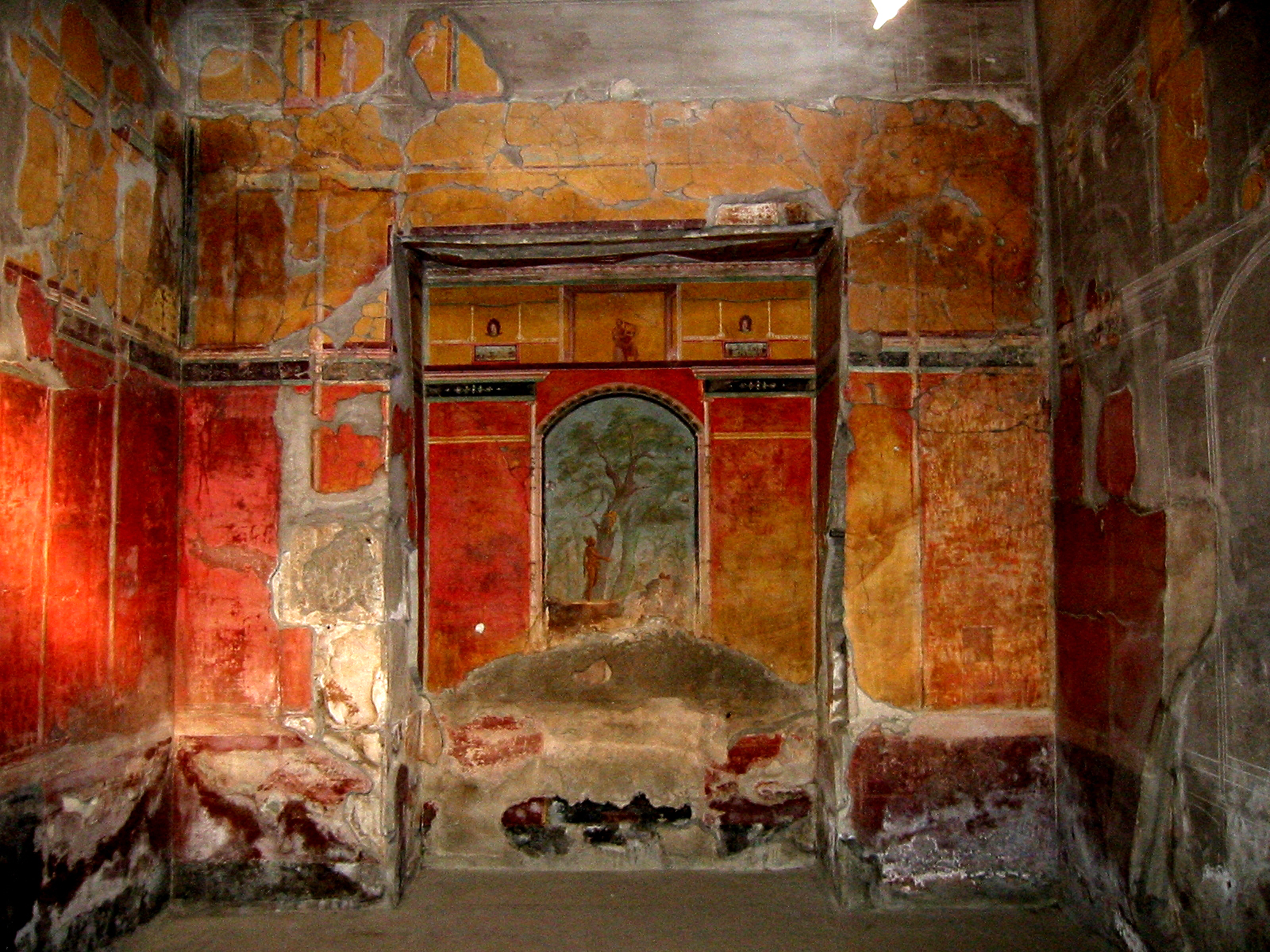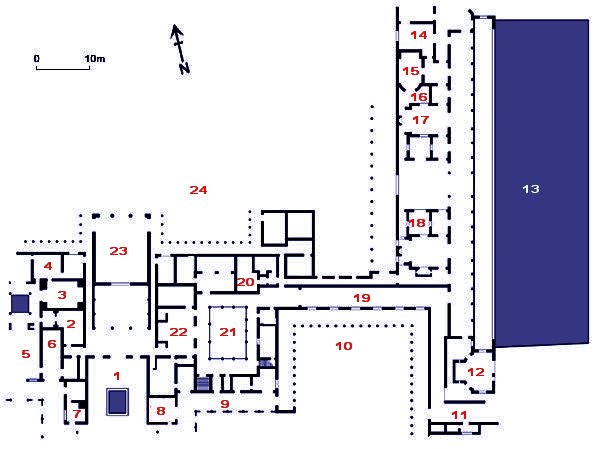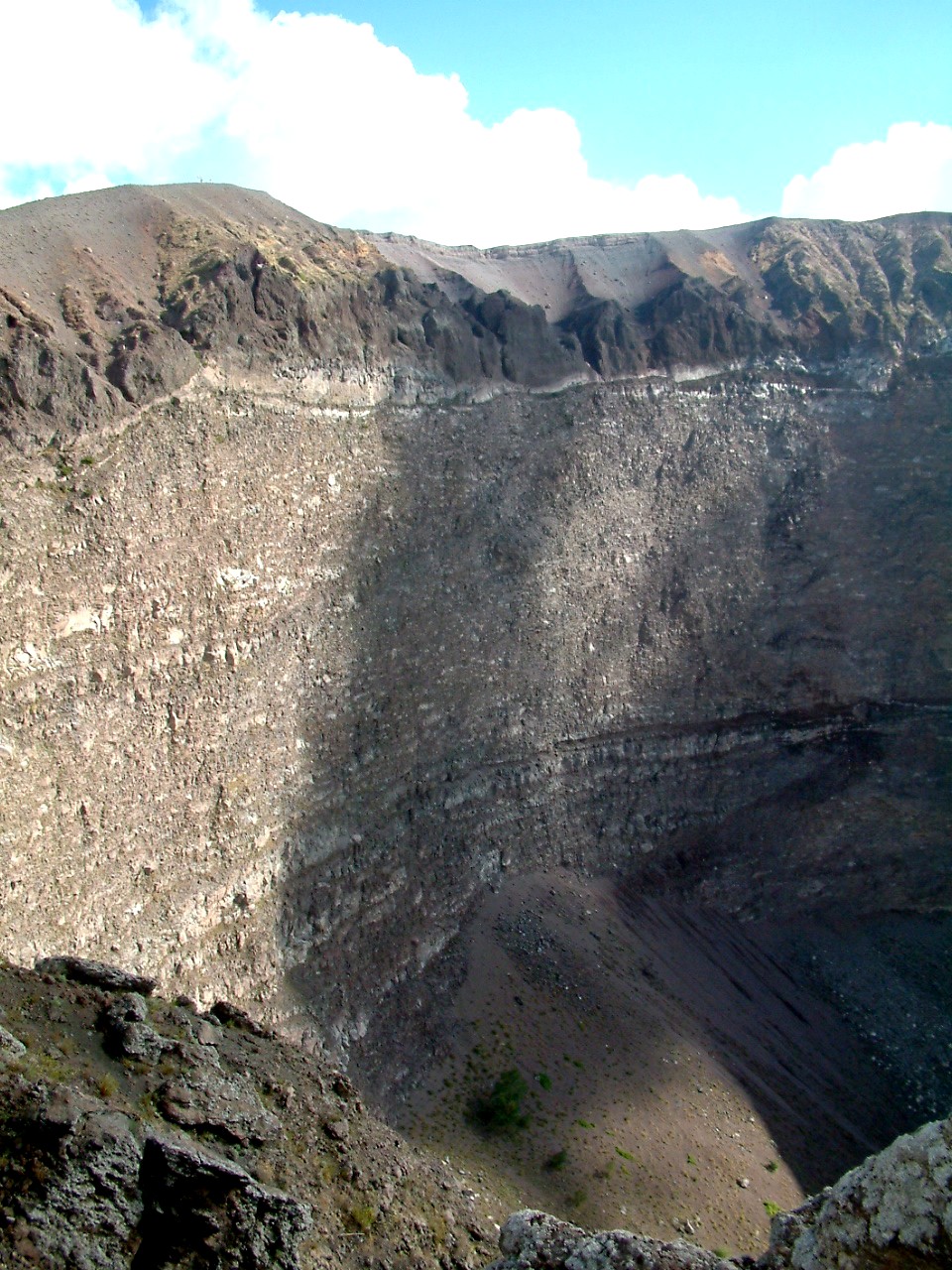|
Poppea
Poppaea Sabina (AD 30 – 65), also known as Ollia, was a Roman empress as the second wife of the Emperor Nero. She had also been wife to the future emperor Otho. The historians of antiquity describe her as a beautiful woman who used intrigues to become empress. There is a large villa near Pompeii that bears her name because of the archaeological finds there. It has been largely excavated and can be visited today. Early life Birth Poppaea Sabina the Younger was born in Pompeii in AD 30 as the daughter of Titus Ollius and Poppaea Sabina the Elder.Simon Hornblower, Antony Spawforth-E.A. (edd.), Oxford Classical Dictionary, Oxford University Press, 2003 , 1221. At birth and for most of her childhood she went by her proper patronymic nomen "Ollia," belonging to women of her father's gens, the Ollii, but at some point, probably before her first marriage, decided to start going by her mother's name instead, potentially due to her father's disgrace and suicide. It is very likel ... [...More Info...] [...Related Items...] OR: [Wikipedia] [Google] [Baidu] |
Otho
Marcus Otho (; born Marcus Salvius Otho; 28 April 32 – 16 April 69) was the seventh Roman emperor, ruling for three months from 15 January to 16 April 69. He was the second emperor of the Year of the Four Emperors. A member of a noble Etruscan family, Otho was initially a friend and courtier of the young emperor Nero until he was effectively banished to the governorship of the remote province of Lusitania in 58 following his wife Poppaea Sabina's affair with Nero. After a period of moderate rule in the province, he allied himself with Galba, the governor of neighbouring Hispania Tarraconensis, during the revolts of 68. He accompanied Galba on his march to Rome, but revolted and murdered Galba at the start of the next year. Inheriting the problem of the rebellion of Vitellius, commander of the army in Germania Inferior, Otho led a sizeable force which met Vitellius' army at the Battle of Bedriacum. After initial fighting resulted in 40,000 casualties, and a retreat of his ... [...More Info...] [...Related Items...] OR: [Wikipedia] [Google] [Baidu] |
Villa Poppaea
The Villa Poppaea is an ancient luxurious Roman seaside villa (''villa maritima'') located in Torre Annunziata between Naples and Sorrento, in Southern Italy. It is also called the Villa Oplontis or Oplontis Villa A. as it was situated in the ancient Roman town of Oplontis. It was buried and preserved in the eruption of Vesuvius in 79 AD, like the nearby cities of Herculaneum and Pompeii, about below modern ground level. The quality of the decorations and construction suggests that it was owned by the Emperor Nero, and a pottery shard bearing the name of a freedman of Poppaea Sabina, the second wife of the emperor Nero was found at the site, which suggests the villa may have been her residence when she was away from Rome and which gives it its popular name. It was sumptuously decorated with fine works of art. Its marble columns and capitals mark it out as being especially luxurious compared with others in this region that usually had stuccoed brick columns. Many artifact ... [...More Info...] [...Related Items...] OR: [Wikipedia] [Google] [Baidu] |
Casa Del Menandro
The House of Menander (Italian: Casa del Menandro) is one of the richest and most magnificent houses in ancient Pompeii in terms of architecture, decoration and contents, and covers a large area of about occupying most of its '' insula''. Its quality means the owner must have been an aristocrat involved in politics, with great taste for art. The house was excavated between November 1926 and June 1932 and is located in Region I, Insula 10, Entrance 4 (I.10.4) of the city. Description The oldest part of the house consists of a relatively modest atrium with immediately surrounding rooms built in 250 BC. About 100 years later the ''domus'' was modernised; tuff capitals were used for the entrance door and the ''tablinum''. In the Augustan period the ''domus'' was substantially modified; a peristyle was built using the space from the demolition of the adjacent residential buildings. In the space to the west, elaborately decorated thermal baths were created, centred around a small ... [...More Info...] [...Related Items...] OR: [Wikipedia] [Google] [Baidu] |
Augusta (honorific)
Augusta may refer to: Places Australia * Augusta, Western Australia Brasil * Rua Augusta (São Paulo) Canada * Augusta, Ontario * North Augusta, Ontario * Augusta Street (Hamilton, Ontario) France * Augusta Suessionum ("Augusta of the Suessii"), Soissons * Augusta Viromanduorum ("Augusta of the Viromandui"), Saint-Quentin Germany * Augusta Treverorum ("Augusta of the Treveri") or Trier * Augusta Vindelicorum ("Augusta of the Vindelici") or Augsburg Italy * Augusta, Sicily * Augusta Praetoria Salassorum ("Praetorian Augusta of the Salassi") or Aosta * Augusta Taurinorum ("Augusta of the Taurini") or Turin * Perugia or ''Augusta Perusia'' Spain * Emerita Augusta, Mérida, Spain * Caesar Augusta, Zaragoza, Spain United States * Augusta, Arkansas * Augusta Charter Township, Michigan * Augusta County, Virginia * Augusta, Georgia ** Augusta National Golf Club ("Augusta"), home of the Masters Tournament * Augusta, Illinois * Augusta, Indiana * Augusta, Indianapolis, Indiana * ... [...More Info...] [...Related Items...] OR: [Wikipedia] [Google] [Baidu] |
Tiberius
Tiberius Julius Caesar Augustus (; 16 November 42 BC – 16 March AD 37) was the second Roman emperor. He reigned from AD 14 until 37, succeeding his stepfather, the first Roman emperor Augustus. Tiberius was born in Rome in 42 BC. His father was the politician Tiberius Claudius Nero and his mother was Livia Drusilla, who would eventually divorce his father, and marry the future-emperor Augustus in 38 BC. Following the untimely deaths of Augustus' two grandsons and adopted heirs, Gaius and Lucius Caesar, Tiberius was designated Augustus' successor. Prior to this, Tiberius had proved himself an able diplomat, and one of the most successful Roman generals: his conquests of Pannonia, Dalmatia, Raetia, and (temporarily) parts of Germania laid the foundations for the empire's northern frontier. Early in his career, Tiberius was happily married to Vipsania, daughter of Augustus' friend, distinguished general and intended heir, Marcus Vipsanius Agrippa. They had a son, Drusus Jul ... [...More Info...] [...Related Items...] OR: [Wikipedia] [Google] [Baidu] |
Quaestor
A ( , , ; "investigator") was a public official in Ancient Rome. There were various types of quaestors, with the title used to describe greatly different offices at different times. In the Roman Republic, quaestors were elected officials who supervised the state treasury and conducted audits. When assigned to provincial governors, the duties were mainly administrative and logistical, but also could expand to encompass military leadership and command. It was the lowest ranking position in the ' (course of offices); by the first century BC, one had to have been quaestor to be eligible for any other posts. In the Roman Empire, the position initially remained as assistants to the magistrates with financial duties in the provinces, but over time, it faded away in the face of the expanding imperial bureaucracy. A position with a similar name (the ') emerged during the Constantinian period with judicial responsibilities. Etymology ''Quaestor'' derives from the Latin verb ', ' ... [...More Info...] [...Related Items...] OR: [Wikipedia] [Google] [Baidu] |
Oplontis
Oplontis is an ancient Roman archaeological site located in the town of Torre Annunziata, south of Naples in the Campania region of southern Italy. The excavated site comprises two Roman villas, the best-known of which is Villa A, the so-called Villa Poppaea. Like the nearby towns of Pompeii and Herculaneum, Oplontis was buried in ash during the volcanic eruption of Mount Vesuvius in 79 AD. However, the force of the eruption was even stronger than at these cities as not only roofs collapsed, but walls and columns were broken and pieces thrown sideways. History and excavations The town of Oplontis probably developed under where Torre Annunziata stands today. Excavations have revealed buildings particularly on the east and west sides of the town, the eastern one in the immediate vicinity of Villa A and the other almost at its boundary with Torre del Greco. It is thought that in antiquity, as elsewhere (e.g. at Herculaneum and Stabiae), luxury residential villas like Villa A line ... [...More Info...] [...Related Items...] OR: [Wikipedia] [Google] [Baidu] |
Herculaneum
Herculaneum (; Neapolitan and it, Ercolano) was an ancient town, located in the modern-day ''comune'' of Ercolano, Campania, Italy. Herculaneum was buried under volcanic ash and pumice in the eruption of Mount Vesuvius in AD 79. Like the nearby city of Pompeii, Herculaneum is famous as one of the few ancient cities to be preserved nearly intact, as the ash that blanketed the town protected it against looting and elements. Although less known than Pompeii today, it was the first, and the only discovered buried Vesuvian city (in 1709) for a long time. Pompeii was revealed only in 1748 and identified in 1763. Unlike Pompeii, the mainly pyroclastic material that covered Herculaneum carbonized and preserved more wood in objects such as roofs, beds, and doors, as well as other organic-based materials such as food and papyrus. According to the traditional tale, the city was rediscovered by chance in 1709, during the drilling of a well. Remnants of the city, however, were already fou ... [...More Info...] [...Related Items...] OR: [Wikipedia] [Google] [Baidu] |
Eruption Of Mount Vesuvius In 79
Of the many eruptions of Mount Vesuvius, a major stratovolcano in southern Italy, the best-known is its eruption in 79 AD, which was one of the deadliest in European history. The eruption of Mount Vesuvius in 79 AD is one of the best-known in history. In the autumn of 79 AD, Mount Vesuvius violently spewed forth a deadly cloud of super-heated tephra and gases to a height of , ejecting molten rock, pulverized pumice and hot ash at 1.5 million tons per second, ultimately releasing 100,000 times the thermal energy of the atomic bombings of Hiroshima and Nagasaki. The event gives its name to the Vesuvian type of volcanic eruption, characterised by columns of hot gases and ash reaching the stratosphere, although the event also included pyroclastic flows associated with Pelean eruptions. The event destroyed several towns and minor settlements in the area, at the time part of the Roman Empire. Pompeii and Herculaneum, obliterated and buried underneath massive pyroclastic surg ... [...More Info...] [...Related Items...] OR: [Wikipedia] [Google] [Baidu] |
Menander
Menander (; grc-gre, Μένανδρος ''Menandros''; c. 342/41 – c. 290 BC) was a Greek dramatist and the best-known representative of Athenian New Comedy. He wrote 108 comedies and took the prize at the Lenaia festival eight times. His record at the City Dionysia is unknown. He was one of the most popular writers in antiquity, but his work was lost during the Middle Ages and is now known in highly fragmentary form, much of which was discovered in the 20th century. Only one play, ''Dyskolos'', has survived almost complete. Life and work Menander was the son of well-to-do parents; his father Diopeithes is identified by some with the Athenian general and governor of the Thracian Chersonese known from the speech of Demosthenes ''De Chersoneso''. He presumably derived his taste for comic drama from his uncle Alexis. He was the friend, associate, and perhaps pupil of Theophrastus, and was on intimate terms with the Athenian dictator Demetrius of Phalerum. He also enjoyed th ... [...More Info...] [...Related Items...] OR: [Wikipedia] [Google] [Baidu] |
Ollia Gens
The gens Ollia was a minor plebeian family at Rome. Few members of this gens achieved any prominence, and the best-known may have been Titus Ollius, the father of the empress Poppaea Sabina. Other Ollii are known from inscriptions. Origin The nomen ''Ollius'' is probably another orthography of '' Aulius'', a patronymic surname derived from the common praenomen ''Aulus''. Members * Titus Ollius, a man of equestrian rank, was an intimate friend of Sejanus, and was put to death by Tiberius after his friend's downfall. He married Poppaea Sabina the Elder, and was the father of the future empress of that name. * Ollia T. f. Sabina, better known under her later name Poppaea Sabina. * Lucius Ollius, named in an inscription from Velitrae in Latium. * Quintus Ollius Felix, named in an inscription from Nuceria in Campania. * Ollius Nicadas, husband of Milonia Apollonia, named in an inscription from Rome. * Ollia C. f. Pothina, buried at Salona in Dalmatia, aged seventeen.. * Gaius Olliu ... [...More Info...] [...Related Items...] OR: [Wikipedia] [Google] [Baidu] |
Gens
In ancient Rome, a gens ( or , ; plural: ''gentes'' ) was a family consisting of individuals who shared the same Roman naming conventions#Nomen, nomen and who claimed descent from a common ancestor. A branch of a gens was called a ''stirps'' (plural: ''stirpes''). The ''gens'' was an important social structure at Rome and throughout Roman Italy, Italia during the period of the Roman Republic. Much of individuals' social standing depended on the gens to which they belonged. Certain gentes were classified as Patrician (ancient Rome), patrician, others as plebs, plebeian; some had both patrician and plebeian branches. The importance of membership in a gens declined considerably in Roman Empire, imperial times, although the ''gentilicium'' continued to be used and defined the origins and Roman dynasty, dynasties of Roman emperors. Harper's Dictionary of Classical Antiquities, ''Harper's Dictionary of Classical Literature and Antiquities'', Second Edition, Harry Thurston Peck, E ... [...More Info...] [...Related Items...] OR: [Wikipedia] [Google] [Baidu] |




.jpg)


